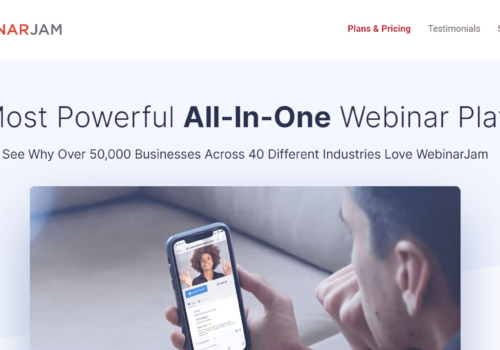Webinars and Seminar are the most common words we use when we talk about events, lets’s take a look at how different they are from each other.
It used to be that you had to choose between hosting a webinar or a seminar and making sacrifices in one or the other.
An in-person seminar is more or less reliant on attendees’ ability to physically attend the event, decreasing its overall footprint; nevertheless, you might have a ticketed event with tickets available for purchase.
When it comes to webinars, however, two key elements are typically overlooked: paying for tickets is tough when links may be freely shared, and networking is practically impossible on popular webinar platforms.
The following is a definition from Wikipedia.
A seminar is defined as “a gathering of members of a common business community for the exchange of beneficial knowledge.”
A webinar is a live, interactive seminar delivered over the internet.
Users participate in real-time through talking, video-chatting, file-sharing, or asking questions with a microphone during a live presentation, lecture, or workshop.’
Seminars
Seminars and other face-to-face events have always been and will continue to be effective ways to engage an audience. That is no longer the case.
Multi-track events, multi-day panels, Q&As, breakout sessions, and other aspects increase the value of a seminar since, even if it isn’t stated explicitly, most people attend events for the networking aspect as much as the information. As a result, seminars have routinely surpassed events in the past.
Where else could you locate potential customers for a quick chat? The content is rawer and blatantly tangible during a seminar, which leads to more engaging, higher-quality lead generation.
Furthermore, an event’s location provides a basic component that simplifies ticket billing. This is the primary entrance.
Webinars
Webinars would have been a non-ROI focus for many businesses’ event preparations. When it comes to webinars, links to them can be shared and were once widely accessible to anybody having a URL. There was no such thing as a front door.
Furthermore, if you were utilizing a fairly typical webinar platform only a year ago, you were likely missing out on a number of features that would have greatly enhanced the viewer’s experience, such as the ability for attendees to directly connect with the host.
Direct messaging, profile browsing, and other types of participation were absent, while some platforms were fortunate enough to provide live chat for Q&As and discussions throughout the webinar.
Final Thought
There had always been a trade-off to be made when it came to webinars and seminars. Do you want to reach out to a larger audience and increase engagement?
Then you needed a webinar that gave attendees fewer opportunities to network, but you couldn’t charge them to attend.
Would you like to host a private event for which you can charge a fee?
Then you wanted an in-person seminar with networking opportunities that you could count on to provide value to your tickets.
These questions will likely become less and less important since webinars appear to be catching up and bridging the gap that used to exist between the two event kinds.
True, webinars have gone a long way in the previous month, with features that satisfy guests’ expectations and tools that make commercializing an online event more viable.
Related Read:-






